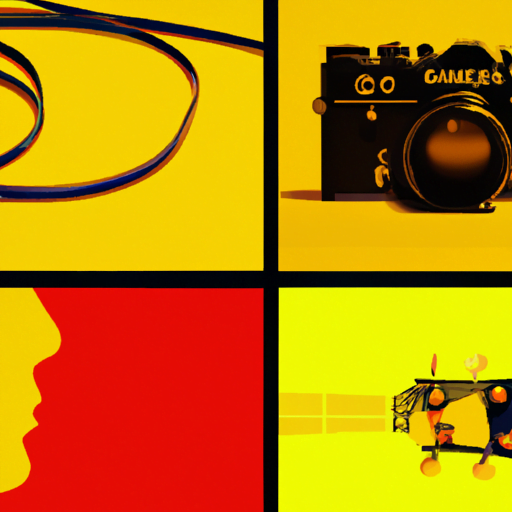-
Table of Contents
The Connection Between Music and Visual Design
Music and visual design are two art forms that have a deep and intricate connection. Both have the power to evoke emotions, create moods, and tell stories. When combined, they can create a powerful and immersive experience for the audience. In this article, we will explore the relationship between music and visual design, and how they can work together to enhance various forms of media.
The Power of Music
Music has been an integral part of human culture for centuries. It has the ability to transcend language barriers and communicate directly with our emotions. Whether it’s a catchy pop song or a haunting classical composition, music has the power to make us feel joy, sadness, excitement, or nostalgia.
When it comes to visual design, music can play a crucial role in setting the mood and enhancing the overall experience. For example, in a film, the right music can heighten the tension in a suspenseful scene or evoke a sense of wonder in a magical moment. In a video game, the soundtrack can immerse the player in the game world and enhance their emotional connection to the story.
Creating a Visual Language for Music
Visual design can also be used to create a visual language for music. Just as music has its own set of notes, chords, and rhythms, visual design can use colors, shapes, and patterns to represent different musical elements. This can be seen in album covers, music videos, and concert visuals.
For example, album covers often use visual elements that reflect the mood or genre of the music. A heavy metal album might feature dark and aggressive imagery, while a pop album might use bright and colorful visuals. Similarly, music videos can use visual effects and editing techniques to enhance the narrative of the song.
Concert visuals are another area where music and visual design come together. Many musicians and bands use elaborate stage setups, lighting effects, and projections to create a visually stunning live performance. These visuals not only enhance the music but also create a unique and memorable experience for the audience.
Case Studies: Music and Visual Design in Action
There are numerous examples of how music and visual design have been successfully combined to create impactful experiences. Let’s take a look at a few case studies:
1. Pink Floyd’s “The Wall”
Pink Floyd’s album “The Wall” is a prime example of how music and visual design can work together to create a cohesive and immersive experience. The album tells a story of isolation and alienation, and the accompanying visuals, including the iconic wall imagery, help to reinforce the themes of the music. The album cover, designed by Gerald Scarfe, features a stark and powerful visual representation of the wall, which has become synonymous with the album.
2. Disney’s “Fantasia”
“Fantasia” is a groundbreaking film that combines classical music with animated visuals. Each segment of the film is set to a different piece of music, and the animation is carefully synchronized to the music. The visuals bring the music to life, creating a visual representation of the emotions and themes of each piece. The film is a testament to the power of combining music and visual design to create a truly immersive experience.
3. Apple’s iPod Ad Campaign
Apple’s iconic iPod ad campaign is another example of how music and visual design can work together to create a powerful message. The ads featured silhouettes of people dancing and listening to music, with the white earbuds and iPod being the only visible elements. The simplicity of the visuals allowed the focus to be on the music and the experience of listening to it. The campaign was highly successful and helped to establish the iPod as a cultural phenomenon.
The Future of Music and Visual Design
As technology continues to advance, the possibilities for combining music and visual design are only growing. Virtual reality (VR) and augmented reality (AR) are opening up new avenues for creating immersive experiences that combine music and visuals. Imagine being able to step into a virtual concert where the visuals and music surround you, creating a truly immersive and interactive experience.
Additionally, advancements in artificial intelligence (AI) are also impacting the relationship between music and visual design. AI algorithms can analyze music and generate visual representations in real-time, creating dynamic and responsive visuals that are synchronized with the music. This opens up new possibilities for live performances and interactive installations.
Conclusion
Music and visual design have a deep and symbiotic relationship. They have the power to evoke emotions, create moods, and tell stories. When combined, they can create a powerful and immersive experience for the audience. Whether it’s a film, a video game, or a live performance, the connection between music and visual design can enhance the overall experience and leave a lasting impact on the audience.
As technology continues to advance, we can expect to see even more innovative and creative ways in which music and visual design come together. Whether it’s through virtual reality, augmented reality, or AI-generated visuals, the future holds exciting possibilities for the intersection of music and visual design.
